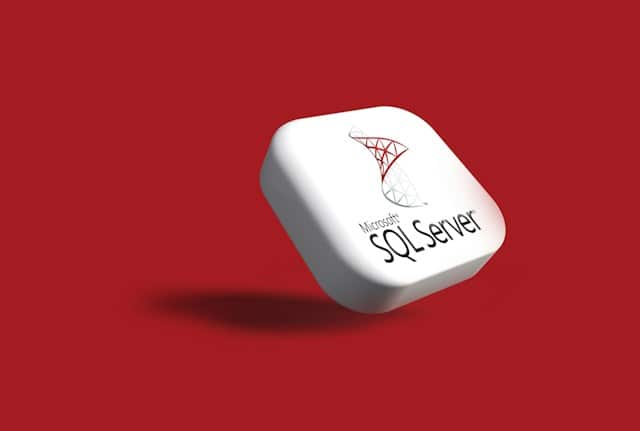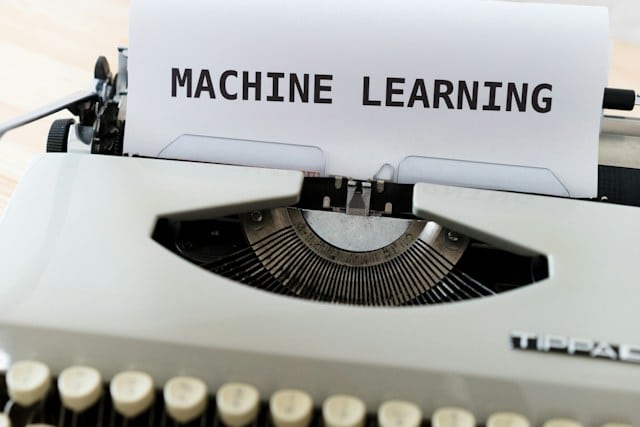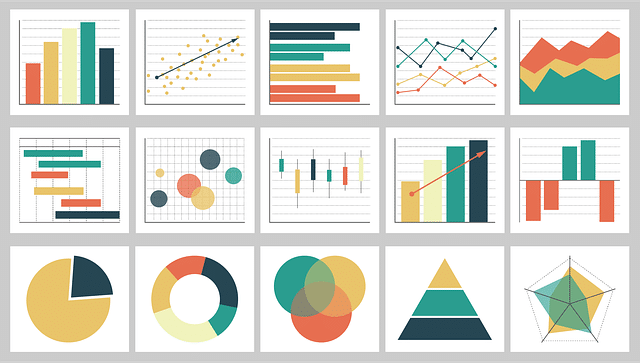Data analyst behavioral interviews can be a valuable tool for hiring managers to assess your skills, experience, and work style.
We’ve uncovered 22 of the most important questions for you!
These types of questions go beyond simply testing your technical knowledge… they delve deeper into how well you handle real-world scenarios, interact with teams, and solve problems.
Here are some behavioral-based data analyst interview questions for a data analyst:
Tell me about a project in which you worked with a substantial dataset. What tools did you leverage, and what insights did you uncover through analysis?
Walk me through a scenario where you were tasked with cleaning and preparing complex data for analysis. How did you approach this process?
In handling missing or inconsistent data, could you describe a specific instance where you successfully managed such challenges?
Share an experience where you used data visualization to convey crucial insights effectively. How did this visualization impact decision-making or understanding?
Can you give an example of a time when you implemented improvements to enhance the efficiency of a data analysis workflow or process?
With these questions, you can effectively position yourself as the ideal candidate for data analyst jobs.
Let’s dive right in!
What is a Data Analyst Behavioral Interview?

A data analyst behavioral interview is a structured approach used by hiring managers to assess your past behavior in specific work situations.
Instead of hypothetical or theoretical questions, this interview style focuses on real-life experiences and actions.
In this interview format, you are prompted to share examples from your previous roles, highlighting how you approached challenges & handled various data-related scenarios.
The interviewer aims to understand your thought process, decision-making abilities, and how they apply their skills and knowledge in practical settings.

Typically, questions revolve around 3 core areas:
Problem-Solving: Demonstrating how you tackled complex data challenges or projects in your previous roles.
Communication Skills: Assessing your ability to convey technical findings and insights to non-technical stakeholders.
Teamwork and Collaboration: Explaining instances where you worked within a team to achieve data-related objectives.
This interview style helps employers gauge your technical proficiency and your interpersonal skills, adaptability, and problem-solving approach in real work scenarios.
You are also expected to provide specific examples, outlining your actions, the situation you encountered, the task or challenge you faced, and the actions you took.
Let’s get to some behavioral-based data analyst interview questions and potential answers.
Data Analyst Behavioral Interview Questions and Answers

To excel in a behavioral data analyst interview, you need more than technical know-how; it’s about showcasing practical application.
This interview assesses your ability to tackle challenges, collaborate effectively, and apply analytical skills.
This guide will explore key concepts like SQL, programming, data analysis, and more through behavioral questions. Mastering these areas not only helps in the role but also in navigating the interview process effectively.
The concepts we will explore include:
SQL and Database Skills
Programming Languages
Exploratory Data Analysis (EDA)
Data Cleaning and Preprocessing
Statistical Analytics
Machine Learning Fundamentals
Data Visualization
A/B Testing & Experimental Design
Data Security and Ethics
The following sections will guide you through everything you need to know on each topic and provide you with behavioral data analyst interview question samples for each.
Mastering these concepts will enable you to excel in your role and the technical aspects of the behavioral interview process.
Concept 1: SQL and Database Skills

Proficiency in SQL (Structured Query Language) and database management is fundamental for a data analyst role. When discussing this concept in an interview, consider highlighting these key points:
Querying and Data Extraction: Showcase your ability to write complex SQL queries to extract, filter, and manipulate data from databases efficiently. Discuss various types of joins, subqueries, and aggregate functions you’ve used for data retrieval.
Data Manipulation: Emphasize your experience in modifying and transforming data within databases, including tasks like updating records, altering table structures, and handling constraints.
Database Design Understanding: Demonstrate your understanding of database design principles, such as normalization, indexing, and schema structures, showcasing how these impact data storage and retrieval efficiency.
Optimization and Performance: Discuss techniques you’ve employed to optimize SQL queries or database performance, such as indexing strategies or query optimization methods.
Integration with Analytics Tools: If applicable, mention your experience integrating SQL databases with analytical tools or languages like Python or R, illustrating how you use SQL as part of a broader analytics workflow.

Behavioral Interview Question Sample 1:
Can you describe a situation where you encountered a challenging data extraction task? How did you approach it?
Answer: I faced a complex data extraction task requiring specific customer transaction data. I reviewed the database structure, crafted a multi-step SQL query, and refined it until I obtained the needed dataset.
Behavioral Interview Question Sample 2:
Could you share an instance where you optimized a slow-running SQL query for improved performance?
Answer: I improved a slow SQL query impacting report generation by restructuring it, introducing indexing, and optimizing clauses, resulting in a 40% reduction in query runtime.
Highlighting your proficiency in SQL and database management, along with practical examples of its application in handling data, querying databases, and optimizing performance, can strongly support your suitability for a data analyst position.
Concept 2: Programming Languages

Proficiency in a programming language is integral for practical data analysis and manipulation. In a data analyst interview, discussing programming languages should cover these key aspects:
Language Proficiency: Highlight your expertise in programming languages such as Python, R, or SQL, emphasizing your ability to write clean, efficient, and scalable code for data analysis tasks.
Application in Data Analysis: Showcase specific examples of how you’ve used programming languages to extract, clean, transform, and analyze data, demonstrating your problem-solving skills in real-world scenarios.
Data Visualization and Reporting: Discuss how you leverage programming languages to create visualizations, generate reports, and communicate insights, showcasing your ability to present complex data in an understandable format.
Learning and Adaptability: Illustrate your capacity to learn new languages or libraries quickly, emphasizing adaptability and a willingness to embrace new tools or technologies to improve your analytical capabilities.
Collaboration and Documentation: Highlight how you document your code and collaborate with team members, ensuring that your analyses are reproducible and comprehensible to others.
Behavioral Interview Question Sample 3:
Can you describe a situation where your programming skills significantly improved a data analysis process?
Answer: Certainly. In a previous project, I automated data cleaning procedures using Python scripts, reducing manual effort by 60% and expediting analysis turnaround time.
Behavioral Interview Question Sample 4:
How do you ensure effective collaboration when working on data analysis projects that involve programming?
Answer: I maintain clear code documentation and collaborate through version control systems like Git, facilitating seamless teamwork and ensuring code reproducibility and transparency throughout the project lifecycle.
Demonstrating a strong command of programming languages, coupled with their practical application in data analysis, is essential for showcasing your suitability as a data analyst.
Concept 3: Exploratory Data Analysis (EDA)

EDA is the preliminary phase in data analysis, involving techniques to understand and summarize the main characteristics of a dataset. When discussing EDA in an interview, consider these key points:
Data Overview: Explain how EDA involves examining data structure, distributions, and basic statistics to gain initial insights into variables, identifying patterns, and potential issues like outliers or missing values.
Visualization Techniques: Highlight the use of visualizations, such as histograms, box plots, scatter plots, and correlation matrices, to represent relationships between variables and uncover trends or anomalies visually.
Feature Engineering: Discuss how EDA informs feature selection or engineering by identifying relevant variables and transformations needed for predictive modeling or analysis.
Identifying Patterns and Relationships: Emphasize the importance of EDA in discovering correlations, associations, or clusters within the data, laying the groundwork for further analysis or hypothesis formulation.
Interactive Exploration: If applicable, mention tools or techniques used for interactive exploration, allowing for deeper dives into specific data segments or patterns, enabling more comprehensive analysis.
Behavioral Interview Question Sample 5:
Can you describe a time when exploratory data analysis helped uncover valuable insights in a project?
Answer: In a marketing analysis project, EDA revealed a strong correlation between customer engagement metrics and sales. By visualizing this relationship, we identified specific behavioral patterns indicating higher purchase intent, guiding targeted marketing strategies that increased sales by 20%.
Behavioral Interview Question Sample 6:
How do you approach handling missing data during exploratory data analysis?
Answer: I assess missing data impact, then use imputation or exclusion based on patterns and project needs to minimize its influence on insights.
Demonstrating proficiency in conducting EDA, interpreting visualizations, and leveraging insights derived from this exploratory phase to guide subsequent analytical steps showcases your ability to extract meaningful information from raw datasets.
Concept 4: Data Cleaning and Preprocessing

Data cleaning and preprocessing are foundational steps in ensuring data quality and reliability for analysis. When discussing this concept in an interview, consider these key points:
Data Quality Assessment: Explain your approach to identifying and addressing issues within datasets, including handling missing values, outliers, duplicates, and inconsistencies. Discuss techniques like imputation, outlier detection, and normalization.
Normalization and Transformation: Discuss methods used to normalize data distributions and transform variables for better analysis. Mention techniques such as scaling, log transformation, or encoding categorical variables.
Impact on Analysis: Emphasize how effective data cleaning and preprocessing significantly enhance the accuracy and validity of subsequent analyses. Share examples where thorough preprocessing led to more reliable insights or improved model performance.
Automated Processes: Highlight any automated or semi-automated processes or scripts you’ve developed to streamline data cleaning tasks, showcasing efficiency in handling large datasets and ensuring consistency in preprocessing steps.
Documentation and Reproducibility: Stress the importance of documenting data cleaning steps and ensuring reproducibility to facilitate collaboration and transparency in analysis workflows.

Behavioral Interview Question Sample 7:
Describe a time when you encountered a challenging data cleaning issue. How did you approach and resolve it?
Answer: In a project, we faced missing data in a critical variable. I employed multiple imputation techniques after careful analysis to maintain data integrity. Then, I cross-validated imputed values to ensure accuracy, resulting in a dataset suitable for analysis.
Behavioral Interview Question Sample 8:
Can you share an instance where thorough data preprocessing significantly impacted the outcome of a project?
Answer: During a predictive modeling task, meticulous preprocessing of variables improved model performance by 15%. Handling outliers, scaling features, and encoding categorical variables enhanced the model’s accuracy and reliability, leading to more informed decision-making.
Demonstrating a comprehensive understanding of data cleaning techniques, their impact on analysis, and the ability to navigate various preprocessing challenges can strongly support your suitability as a data analyst.
Concept 5: Statistical Analysis

Statistical analysis forms the backbone of data interpretation and decision-making for data analysts. During interviews, this concept is often explored to gauge an applicant’s understanding and practical application of statistical techniques.
Key points to consider when discussing statistical analysis:
Fundamental Techniques: Highlight your grasp of essential statistical measures like mean, median, mode, standard deviation, and variance, showcasing their roles in understanding data distributions and central tendencies.
Hypothesis Testing: Discuss your familiarity with hypothesis testing and how it’s utilized to validate assumptions or claims about data, including the significance of p-values in drawing conclusions.
Practical Application: Provide examples demonstrating how statistical analysis has influenced decision-making or solved real-world problems in your previous roles or projects.
Data Interpretation Skills: Emphasize your ability to interpret data patterns, trends, and relationships through statistical methods, showcasing how these insights drive actionable recommendations or strategies.
Software Proficiency: If relevant, mention your proficiency in statistical software like R, Python (with libraries such as NumPy, and Pandas), or statistical modules within other analytical tools.

Behavioral Interview Question Sample 9:
Can you describe a project where you applied statistical analysis techniques to derive meaningful insights?
Answer: Certainly. In a marketing analytics project, I conducted univariate analysis to examine customer purchase behavior. By analyzing individual variables like purchase frequency and amount spent, we identified key customer segments and tailored marketing strategies accordingly.
Behavioral Interview Question Sample 10:
How have you utilized statistical analysis tools to solve a data-related challenge?
Answer: In sales forecasting, I employed statistical tools and multivariate analysis to identify sales trends and build precise predictive models.
A solid grasp of statistical analysis, its application in data interpretation, and the ability to communicate findings effectively are vital skills sought after in data analyst roles.
Concept 6: Machine Learning Fundamentals

Understanding machine learning basics is increasingly crucial for data analysts. When discussing this concept in an interview, consider these key points:
Algorithms and Models: Highlight familiarity with various machine learning algorithms such as regression, classification, clustering, and their applications in deriving insights from data.
Model Evaluation: Discuss methods for evaluating model performance, including metrics like accuracy, precision, recall, F1 score, ROC curves, or cross-validation techniques.
Feature Selection and Engineering: Explain how feature selection and engineering enhance model performance by identifying and incorporating relevant variables or transformations into the analysis.
Supervised vs. Unsupervised Learning: Showcase understanding of the differences between supervised (having labeled data) and unsupervised (unlabeled data) learning approaches and their respective applications.
Practical Application: Provide examples of using machine learning in real-world scenarios, such as predicting customer behavior, fraud detection, or recommendation systems, demonstrating the practical application of these concepts.

Behavioral Interview Question Sample 11:
Can you describe a situation where you applied machine learning in a project, and how did it impact the final outcomes?
Answer: I used machine learning for sales forecasting, improving predictions by implementing regression models. This optimized inventory management, reducing excess inventory costs by 10%.
Behavioral Interview Question Sample 12:
How have you explained complex machine learning concepts to non-technical team members?
Answer: When introducing a recommendation system, I simplified collaborative filtering by likening it to friends recommending movies. This analogy helped everyone understand the system’s functionality and goals easily.
Demonstrating proficiency in machine learning fundamentals, including model selection, evaluation, and practical application, emphasizes your ability to leverage data-driven insights for decision-making as a data analyst.
Concept 7: Data Visualization

Data visualization is a pivotal aspect of data analysis, focusing on presenting information graphically to reveal insights and patterns within datasets.
When discussing this concept in an interview, consider these key points:
Visual Representation: Highlight the importance of visualizing data through charts, graphs, and dashboards to communicate complex information effectively to stakeholders.
Tools and Techniques: Discuss proficiency in using visualization tools like Tableau, Power BI, or Python libraries (matplotlib, seaborn) to create compelling and informative visualizations.
Storytelling with Data: Emphasize the role of storytelling in visualization, where visuals are used to narrate a coherent and persuasive data-driven story that guides decision-making.
Audience Understanding: Showcase the significance of tailoring visualizations to suit the audience, ensuring clarity and relevance in conveying insights to both technical and non-technical stakeholders.
Interactive Visualization: If applicable, mention experience in creating interactive visualizations that enable deeper exploration of data, fostering a more engaging and insightful analysis.

Behavioral Interview Question Sample 13:
Can you discuss a time when your data visualization effectively communicated complex information to a non-technical audience?
Answer: I created a series of interactive dashboards using Tableau for a sales analysis presentation. The visualizations simplified complex sales trends and regional performance, enabling executives to make informed decisions quickly.”
Behavioral Interview Question Sample 14:
Which tools or techniques do you use for visualization?
Answer: I’m proficient in tools like Tableau and Python libraries such as Matplotlib and Seaborn. These tools help create compelling visuals that convey data insights effectively to diverse audiences.
Demonstrating proficiency in visualization tools, the ability to craft impactful visual narratives, and the understanding of presenting insights clearly and audience-relevantly showcases your effectiveness in deriving value from data.
Concept 8: A/B Testing & Experimental Design

A/B testing is a method used to compare two versions of a variable to determine which performs better. In an interview, discussing this concept should include these key points:
Purpose: Explain the primary goal of A/B testing, which is to assess changes or interventions and determine their impact on a specific outcome, such as user engagement, conversion rates, or sales.
Experimental Setup: Discuss the setup process, including the selection of control and experimental groups, randomization, and ensuring the groups are similar except for the variable being tested.
Metrics and Analysis: Highlight the importance of defining relevant metrics and statistical methods used to analyze the results. Discuss techniques like hypothesis testing and confidence intervals to determine the statistical significance of the observed differences.
Validity and Interpretation: Emphasize the importance of considering factors like sample size, duration, and external influences to ensure the validity of the experiment. Explain the significance of drawing accurate conclusions from the results.
Practical Applications: Provide examples of how A/B testing has been applied in your previous work or scenarios, showcasing its effectiveness in optimizing strategies or products based on data-driven insights.
Demonstrating expertise in designing A/B tests, analyzing results, and drawing valid conclusions contributes significantly to showcasing your proficiency as a data analyst.
Behavioral Interview Question Sample 15:
Can you describe a time when you used A/B testing to improve a product or strategy?
Answer: At my previous company, we conducted an A/B test on website layout changes to enhance user engagement. By testing two versions and analyzing user interactions, we found that the updated design increased click-through rates by 25%. This prompting us to implement the new layout site-wide.
Behavioral Interview Question Sample 16:
How do you ensure the validity of an A/B test?
Answer: I ensure validity by setting up control and experimental groups, randomizing assignments, defining relevant metrics, and using statistical methods to analyze results. Considering factors like sample size, duration, and external influences helps draw accurate conclusions.
Concept 9: Data Security and Ethics

Data security and ethical considerations are paramount in handling sensitive information. When discussing this concept in an interview, focus on these key points:
Data Privacy Regulations: Highlight awareness of data protection laws like GDPR, CCPA, or HIPAA, emphasizing their significance in governing the collection, storage, and usage of personal or sensitive data.
Confidentiality and Integrity: Discuss measures taken to ensure data confidentiality, integrity, and secure storage, such as encryption, access controls, and regular audits to prevent unauthorized access or data breaches.
Ethical Data Usage: Emphasize the ethical handling of data, ensuring transparency, fairness, and accountability in data collection, analysis, and reporting. Discuss the importance of informed consent and respecting user privacy rights.
Bias and Fairness: Address awareness of biases in data and algorithms, striving for fairness and mitigating biases in models or analyses to prevent discriminatory outcomes.
Data Governance and Compliance: Showcase understanding of organizational policies and protocols for data governance, compliance standards, and the role of ethics in decision-making processes.

Behavioral Interview Question Sample 17:
Why is data security and ethics important in a data analyst’s role?”
Answer: Data security and ethics ensure the protection of sensitive information and respect for user privacy rights. They maintain trust, and compliance with regulations, and uphold ethical practices in data handling and analysis.
Behavioral Interview Question Sample 18:
How do you address data privacy concerns when working with sensitive information?
Answer: I ensure data confidentiality through encryption, access controls, and regular audits. Adhering to regulations like GDPR, CCPA guides ethical handling, respecting user privacy rights, and ensuring transparency in data usage.
These questions and answers should leave you equipped to tackle any technical questions you may be asked in your behavioral interview. But what about non-technical questions?
We’ve got you covered there as well.
Non-Technical Behavioral Data Analyst Interview Questions

In addition to assessing technical skills, behavioral interviews for data analysts also explore non-technical competencies crucial for success in the role.
These questions delve into your interpersonal skills, problem-solving approach, adaptability, and teamwork.
Expect inquiries about your communication style, ability to handle pressure, how you prioritize tasks, and examples of situations where you’ve collaborated effectively.
These questions aim to gauge your fit within the team, your approach to challenges, and how you navigate various work scenarios beyond technical expertise.
Questions may include:
Behavioral Interview Question Sample 19:
Tell me about a time when you had to learn a new tool or technology to complete a project.
Answer: In a past role, I tackled unfamiliar user behavior data analysis using Google Analytics. Despite being new to the tool, I quickly learned it via online tutorials, documentation study, and colleague guidance. Practicing on a smaller dataset enabled efficient extraction of crucial insights, meeting project deadlines and benefiting the team with valuable findings.
Behavioral Interview Question Sample 20:
Describe a situation where you had to work with a difficult team member. How did you handle it?
Answer: In a sales trend project, a teammate faced issues with deadlines and communication. I addressed this by initiating a conversation, refining communication methods, and establishing clearer expectations. Through improved teamwork, we achieved successful and timely project completion.

Behavioral Interview Question Sample 21:
Explain a time when you faced multiple competing tasks. How did you prioritize your workload?
Answer: In my prior role, handling multiple projects with unique deadlines and stakeholders was a challenge. I utilized prioritization methods like the Eisenhower Matrix and communicated openly with my team and manager to set realistic deadlines. This approach ensured the timely completion of all tasks without compromising quality or stakeholder expectations.
Behavioral Interview Question Sample 22:
Describe a time when you successfully communicated complex data insights to a non-technical audience.
Answer: In a presentation to our executive team, I simplified intricate customer segmentation data using visual charts and relatable storytelling. By steering clear of technical terms and emphasizing real-world implications, I ensured everyone understood the data’s significance, aiding informed decision-making.
Remember that all the behavioral interview questions are not solely aimed to test your skills but also to gain an understanding of your personal qualities. Let’s look at some of the personal qualities employers value most.
Personal Qualities Valued in a Data Analyst Behavioral Interview

As a data analyst, there are several personal qualities that will make you stand out in a behavioral interview and the job. These qualities complement your technical skills and can help you maximize your potential:
Accuracy: precise analysis builds trust with colleagues and clients.
Motivation and impact: Show dedication, deliver valuable insights, and influence business decisions.
Organizational skills: Show that you can manage tasks efficiently, meeting deadlines and maintaining structured work.
Self-awareness: This fuels growth. Assess and refine skills continuously for improvement.
Curiosity: This drives exploration of data sources, uncovering trends and patterns.
Passion for data analytics: This fuels the pursuit of valuable insights.
Effective communication, interpersonal skills, teamwork, and adaptability are crucial for success.
By cultivating these personal qualities, you’ll be better equipped to excel as a data analyst and achieve your professional goals.
Final Thoughts

In mastering data analyst interview questions and answers, you will not only demonstrate your technical acumen but also your problem-solving strategies, interpersonal skills, and adaptability.
By honing both technical expertise and behavioral competencies, you can confidently approach your next data analyst interview, illustrating your potential to drive impactful insights and solutions as one of the newest successful data analysts in town.
If you are interested in learning more about the power and potential of OpenAI’s Code Interpreter and its ability to perform advanced data analysis tasks, check out this video:
Frequently Asked Questions
Tell me about a time when you had to analyze a large dataset, incorporating data mining techniques. What was your approach?
In data analyst interviews, detail your methods for handling and mining the extensive dataset. Elaborate on the tools and techniques utilized, encompassing data cleaning, transformation, visualization, and data mining processes. Discuss task prioritization, including feature selection or dimensionality reduction, and address any challenges encountered, emphasizing your strategies for overcoming them.
Share an instance when you presented complex data to a non-technical audience. How did you ensure their understanding?
In a stakeholder meeting, I presented intricate data using clear visualizations and simplified explanations. I translated technical insights into easily digestible information by employing charts, graphs, and relatable analogies. This approach ensured that the non-technical audience comprehended the findings effectively.
Describe a situation where you had to collaborate with cross-functional teams to achieve a shared goal.
In this case, focus on your communication and collaboration skills. Share an example of a project where you worked with colleagues from various departments, such as marketing, finance, or development. Describe the role you played in the team, how you communicated complex data insights, and how your contributions helped achieve the shared objective.
Tell me about a time when you faced a challenge while working on a data analysis project. How did you overcome it?
Challenges are inevitable in any data analysis project. Describe a situation where you encountered difficulties, such as data inconsistency, limited resources, or tight deadlines. Explain the strategies you employed to troubleshoot the problem and how you adjusted your approach to successfully complete the project.
How have you dealt with a disagreement or conflict within your team, especially when it impacted a data-driven decision?
Conflicts can arise, particularly when making data-driven decisions that affect multiple stakeholders. Share a situation where you faced disagreement within your team and discuss how you managed the situation. Highlight your communication, negotiation, and problem-solving skills, emphasizing your ability to remain objective and focus on the data as you sought a resolution.
Describe an instance where you proactively identified an issue or opportunity through analyzing data and made recommendations based on your findings.
As a data analyst, your ability to uncover hidden patterns and trends can lead to valuable insights. Share an example of when you proactively analyzed data and discovered an issue or opportunity. Explain how you presented your findings to the relevant stakeholders and made recommendations for action. Emphasize the impact of your analysis on the organization’s success or the problem’s resolution.








